Photos courtesy of Le Mobilier Nationale
**This article is a direct feature from the March/April 2024 My French Country Home magazine. To see more articles like this featuring exclusive looks behind the scenes of some of France’s most prized possessions, be sure to subscribe to the magazine!**
For the better part of two years, a small team of artisans has devoted countless hours to the restoration of a monumental, yet rarely seen treasure extracted from the charred remains of Notre Dame. With their sacred task now nearly complete, MFCH was given an up-close glimpse of their talent and dedication.

SUBSCRIBE TO THE MAGAZINE
It’s cold inside the ground-floor annex where Fabienne Wadoux sits hunched over a massive wooden table, ministering to a seven-meter (23-foot) section of florid wool velour that unfurls from the imposing roll that rests heavily on a spartan tile floor. Giant plate-glass windows bathe the space in natural light, but a small electric heater does little to cut the late-winter chill of this make-shift restoration studio.
Fabienne shrugs as she warms her skilled fingers around a steaming coffee cup. “This is its birthplace,” she says of the nearly 200-year-old carpet entrusted to her charge. “It’s normal that it should come back here – the only place in the world with the expertise to restore a piece of this quality.”
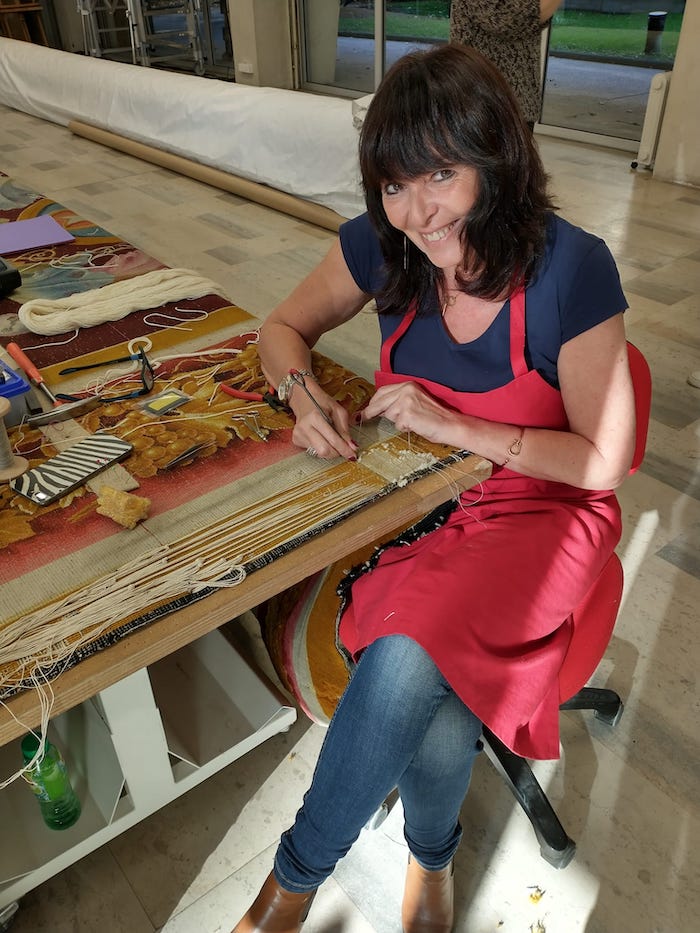
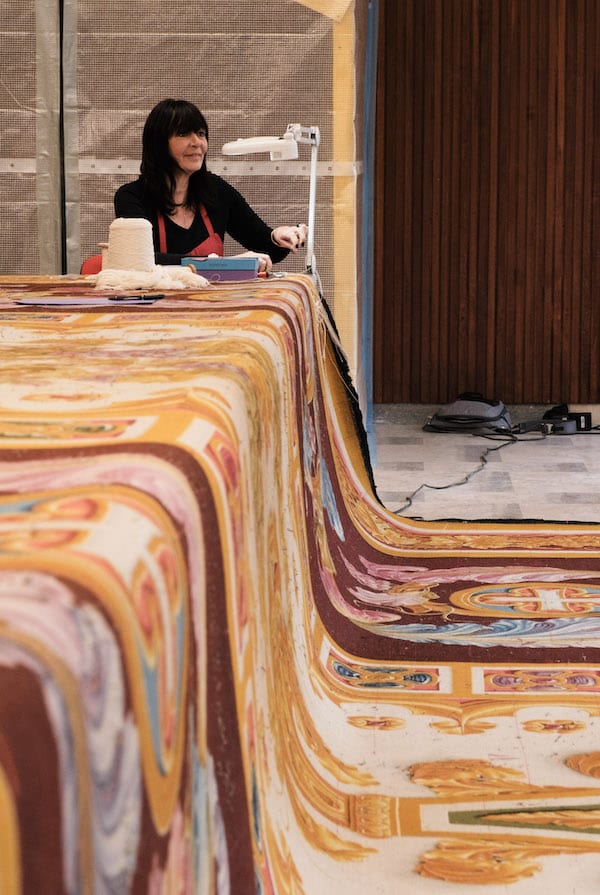
“Here” is the Mobilier National, France’s national furniture repository, which dates back more than four centuries and encompasses the Manufacture Gobelins, the former royal tapestry factory. And this is no ordinary rug: Le Tapis du Choeur is the official ceremonial carpet of the Cathedral of Notre Dame de Paris, a 200-square meter (2,150-square-foot) marvel commissioned during the reign of King Charles X. Nicknamed Le Drap D’Or (“Cloth of Gold”) this magnificent artifact was originally intended to lay in the choir of France’s most famous cathedral – yet the public has seen it no more than a dozen times since its completion in 1833.
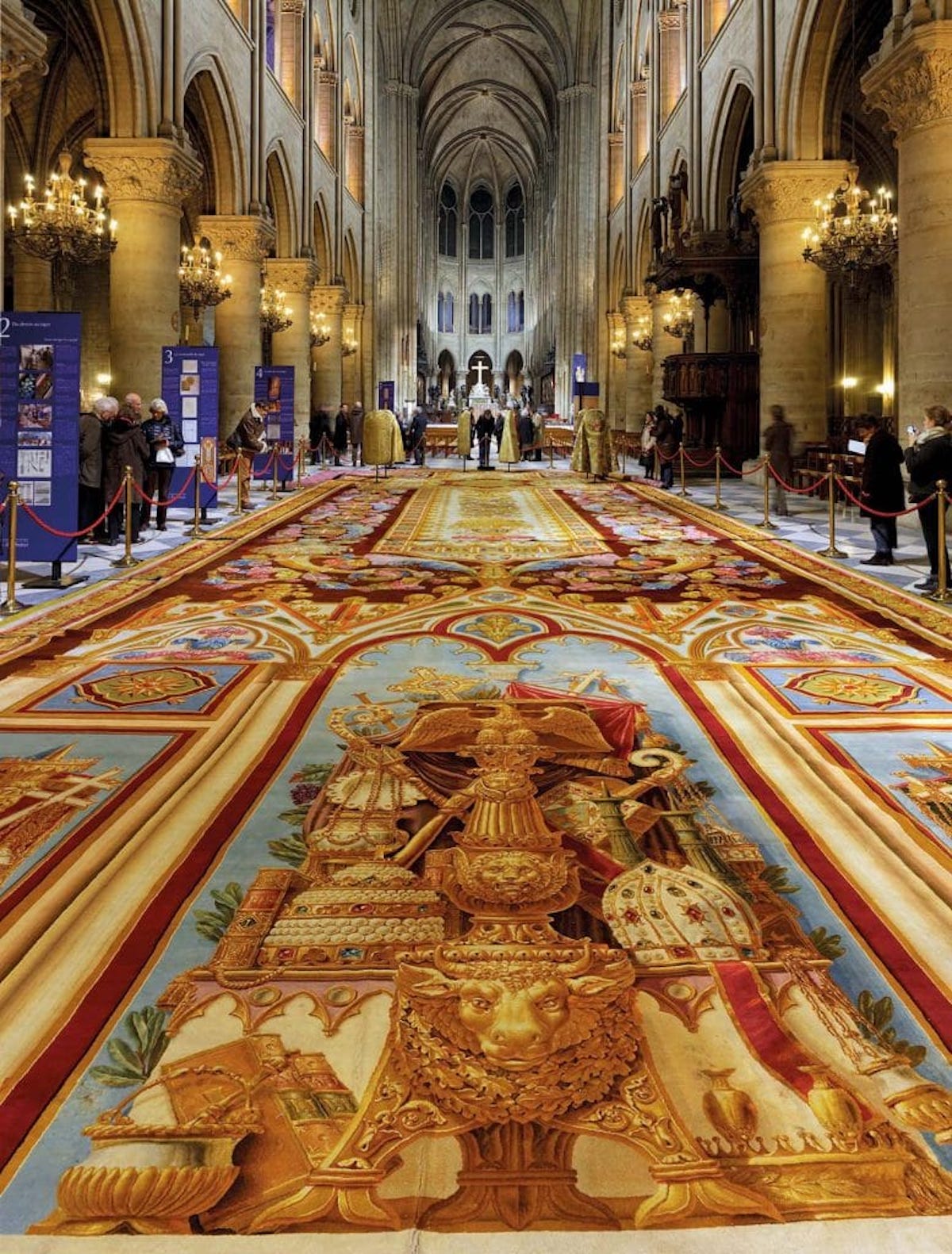
Fabienne first laid eyes on the tapis as a young trainee in textile restoration 40 years ago. A colleague had spotted photos in a popular French magazine showing the carpet – all 25 meters (82 feet) of it, splayed out along the cathedral’s majestic checkerboard nave – and passed them around. “None of us even knew of its existence,” she recalls. The Mobilier National immediately petitioned for a staff viewing of the carpet in situ. “I felt such admiration,” Fabienne says of the extraordinary craftsmanship. “The carpet was in impressive condition…. I never imagined that, one day, I would be called in to restore it.”
Indeed, if it weren’t for a tragic twist of fate – the devastating 2019 fire that destroyed the cathedral’s roof and spire – Fabienne’s reunion with the carpet might never have happened. Spooled up tightly inside custom-made wooden boxes along a wall behind the high altar, the carpet – consisting of separate upper and lower sections – appeared to have survived the inferno unscathed. But a closer inspection revealed that the exterior layers of the roll had succumbed to a more quotidian menace. Moths had set upon the thick wool, leaving long swaths of its ornate pile pockmarked and scarred and exposing its delicate web of warp and weft threads.
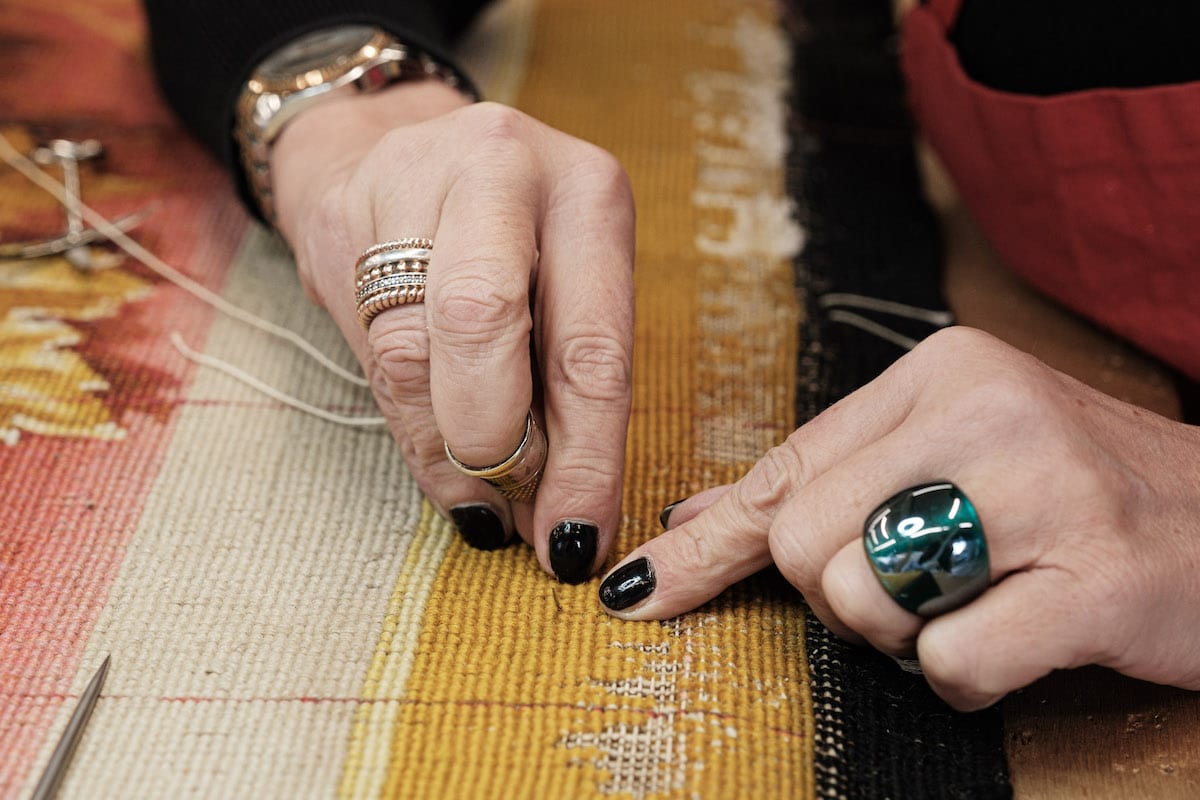
After a thorough cleaning – which included a stint in a vacuum chamber to suffocate any hidden moth larvae that might remain – the carpet spent several months in storage. Then came the Covid pandemic, which introduced further delays. Eventually, though, both sections – which combined weigh more than a ton – were trucked over to the Mobilier National and then unloaded into the atelier with the help of a crane and a half-dozen strong men.
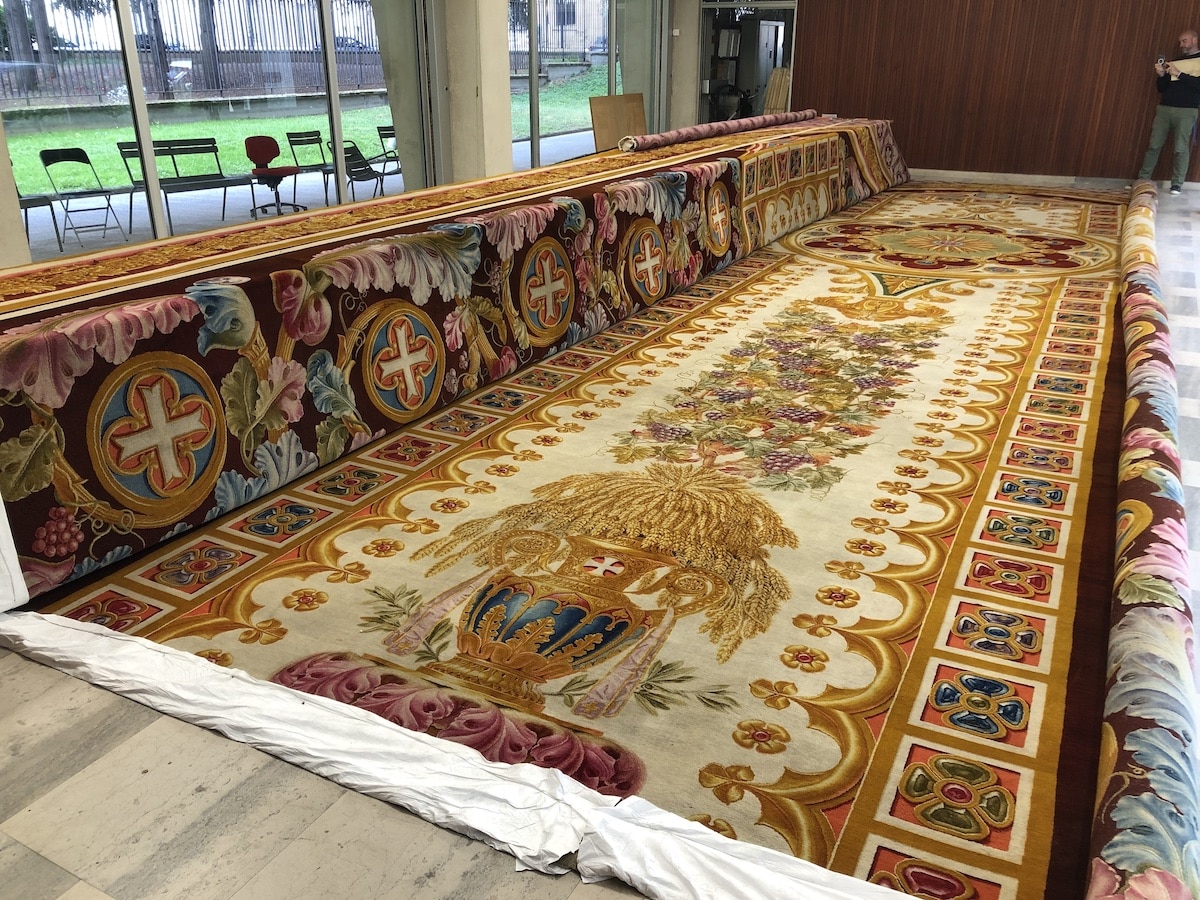
Fabienne and just one other artisan set to work with a toolkit that consists of little more than a curved surgical needle, a thimble, scissors, tweezers, some upholstery tacks and a hammer. The carpet was flipped to expose its underside, the better to see the intricacies of its knots and patterns. A full year was spent working to repair and consolidate the underlying structure of the carpet’s upper section, made of cotton and linen, which had been weakened by the loss of the surrounding wool. (Moths are picky eaters that only consume fibers of animal origin.) “In some places, the holes were so big that we had to recreate the canvas of the carpet from scratch,” Fabienne explains.



When this first phase was complete, the crew of muscular colleagues returned to help flip the carpet again to enable restoration of its vibrant velour. It’s a painstaking process that involves replacing and re-knotting the missing tufts so that they blend seamlessly with the original. Fortunately, the Mobilier National has access to an immense selection of dyed wool from the Gobelins archives – in no fewer than 2,000 different hues. Fabienne selects the skeins she thinks she’ll need and verifies them against the tint of the carpet’s intricate patterns. “The eye is the only judge,” she says. And because light reflects differently off the yarn’s tips, she uses pom poms made from cut strands. “Flat wool threads do not have the same color aspect or density,” she says.


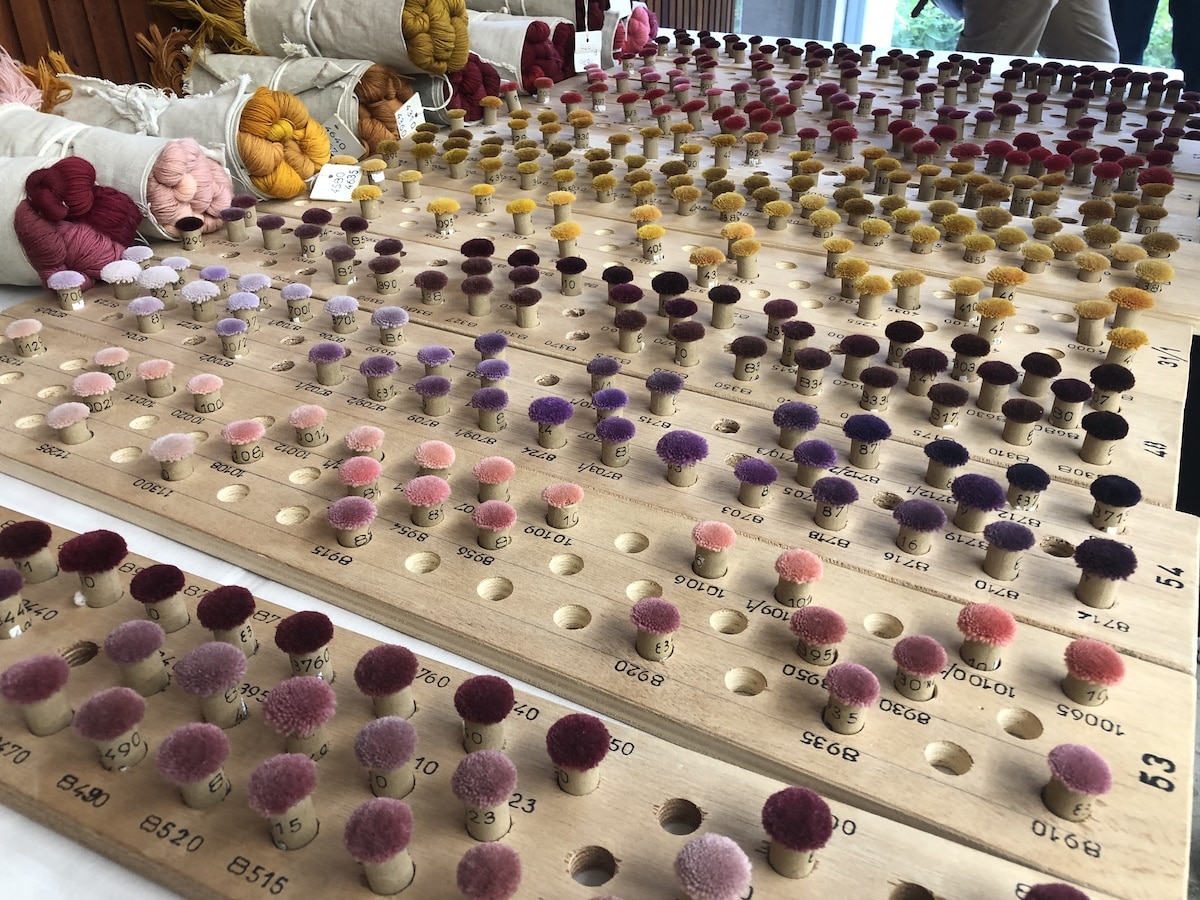
Replete with overt religious imagery, Saint-Ange’s design also included royal emblems like the fleurs de lys, the king’s coat of arms, and other nods to the French monarchy – which, in the run-up to the Second French Revolution, was deeply controversial. Production was halted with the overthrow of Charles X in 1830, but resumed after Charles’ cousin, Louis-Philippe, took the throne. A constitutional monarch, Louis-Philippe felt compelled to have the weavers remove all royal symbols from the carpet – which meant having to cut them out and replace them with inoffensive rosettes, stars and geometric shapes. Fabienne shakes her head to think of the extra burden this meant for her predecessors, but notes the result is almost seamless: “You can barely see the traces,” she says.
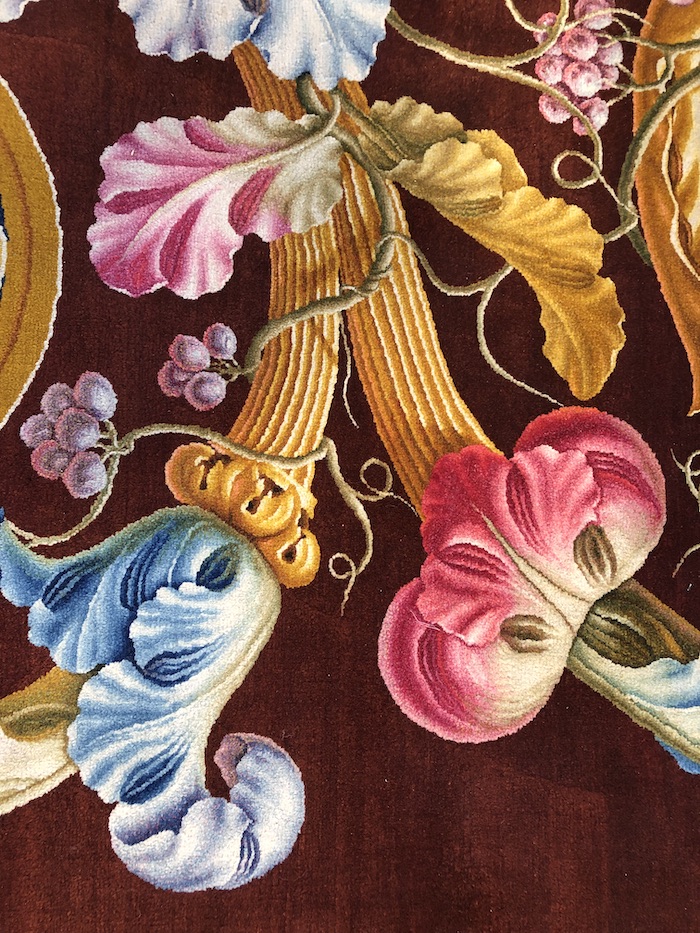

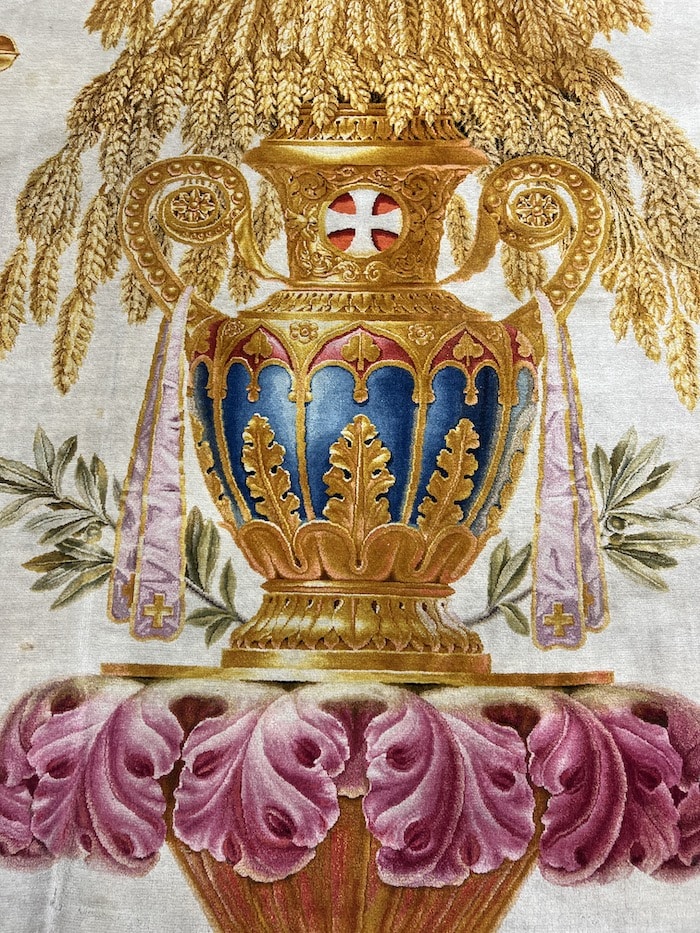
With the restoration of the upper section of the Tapis du Choeur now complete, preparations are being made to display it in the Gobelins Tapestry Factory Museum in April. Fabienne is still hard at work finishing the restoration of the bottom section, which should be completed before the end of 2024 or early 2025, when Notre Dame is scheduled to re-open to the public.
“I feel very proud and privileged to have been allowed to approach this exceptional carpet that most people never see,” she says. We couldn’t agree more!

